
Climber and coach Ari Schneider shares some tips and fun exercises to keep young children engaged in climbing...
"I want to do the Mickey Mouse climb!" George says adamantly.
He stands at under 4 foot and has blonde hair shaped in a bowl cut. George is seven years old, and the "Mickey Mouse climb" is his first project. The route is a 5.10/6a at Movement Climbing and Fitness in Boulder, Colorado where I coach and George trains with the junior club team. That particular climb attracted George's attention because of its distinct blue holds made of three cylinders stacked together creating vague outlines of Mickey Mouse.
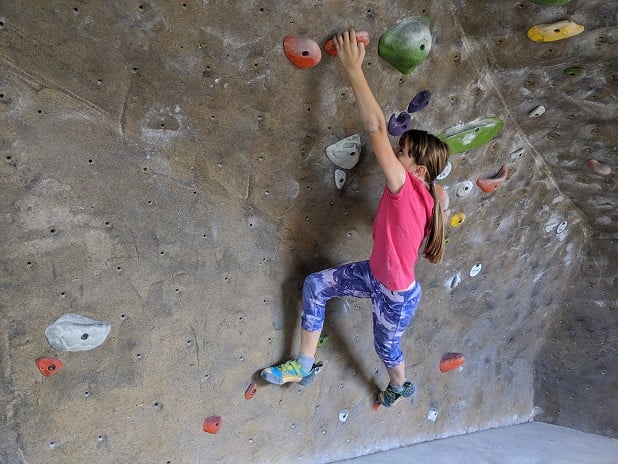
"Alright George, let's get it done!" I reply as I load my belay device and carefully watch him tie in. I know the route will be too reachy for George, but my primary focus with kids his age is channelling enthusiasm. He was clearly excited.
Every Monday, George shows up to training, warms up on some V0 and V1 boulder problems, then puts on his harness to work on the Mickey Mouse climb. Move by move, he works on the sequences, frequently hanging on the top rope, trying to figure out how to get through the moves he can't reach. Whenever I offer to lower him down so he can take a break, George snaps, "No!" He really wants to do it.
It's interesting that George and his teammates are so focused on climbing as a sport. Sure, plenty of kids his age play socially on football teams at school, but there are not so many kids that are fiercely dedicated to an individual sport like climbing. When I was seven years old, I went to my local climbing centre—a dingy building lined with 8-metre top-rope routes with an assortment of holds haphazardly slapped on the walls—for birthday parties and summer camps. I had no clue that indoor climbing was an actual sport. In my mind, the climbing gym was akin to an amusement park. The other kids and I would run around on the mats and eat sweets. We rarely made it to the top of the walls when we did try to climb. Now, with climbing growing in popularity, it's not uncommon to see seven year olds actually training at climbing gyms, pushing through double digit Yosemite Decimal System grades.
It's a great thing for their parents, too. Many parents are challenged balancing their climbing and parenting lives. But climbing is a great sport for bringing kids along. More often than not, I am coaching children while their parents climb for themselves in the background. At one point, while George was swinging around on the Mickey Mouse climb, his father led up the route next to him to give him a high-five.
With the right guidance, parents can get their kids into climbing early on. However, coaching kids under the age of ten requires a much different approach than coaching older youths, teens, and adults. Since young kids are at such a formative period in their mental development, the wrong introduction to climbing can mean a lifelong hatred of the sport, while positive coaching can promote a lifetime passion.
Children are not necessarily motivated by the same factors that motivate their parents to climb. Early on, it's important to establish comfort and excitement about being in a harness. The important thing is not getting to the top of a wall, it's about having fun. When kids are trying out climbing for the first time, the climbing itself is not always the primary motivator. But enthusiasm is often fostered when there are games and prizes involved. Kids can pretend there are dinosaur fossils at the top of the wall or parents can hide treats in some of the holds. One of the reasons George was so excited about his project was simply because the holds looked—with the power of his imagination—like Mickey Mouse. The time will eventually come to shift the focus towards athletic improvement, but that shouldn't be a factor early on. Focusing on things like grades too quickly can create an unhealthy competitive stress at the beginning.
After a little while, young climbers will start to grasp the movements required to climb well, and they will be looking for more of a challenge. That's when I would start to introduce the concepts of following set routes and picking climbs based on grades (but not without remembering the games and the fun motivation). Kids usually like to pick their own routes, so I teach them to look at a route beforehand to see if the moves are reachy or more manageable for someone their size.
Children are light and have strong fingers relative to their bodyweight. They can move through the lower grades quickly, and are strong enough to hold onto little crimps, but they are often stopped short at double digit grades because they can't reach the next holds. Unfortunately, most climbing gyms set exclusively for adult-sized climbers. I know George would certainly be strong enough to do the moves on 5.11s if only the routes were scrunched together for a sub-4 foot climber.
As a coach or supportive parent, it's important to have a plan to help kids overcome reachy moves. I see young climbers get most frustrated about this roadblock. The key is to understand the movement required at each grade. Breaking through 6a and into 6b-c is about sequencing, and a super reachy move will quickly ruin a climber's sequence.
Here are some exercises that can help small kids make the most of their training:
Laser Chase
One of the best workarounds for little climbers getting through big moves is to "set" climbs that mimic the movements at a particular grade by using a laser pointer while the child climbs. It's important to have an extra person to belay. Simply pick a route that would be difficult for a little one, and when they encounter a reachy section, use the laser to point out extra holds from other routes that they can add on. This maintains the structure of climbing a defined route, as form tends to get sloppy when kids are given the freedom to add any holds they chose while they climb.
Elimination
Another tactic to get small climbers on harder routes is playing an elimination game. Start on an easy climb with lots of holds, then use a laser pointer to eliminate off-limits holds to gradually make the climb more difficult. This will help promote the movement skills required for higher grades, and will put children a step ahead when they do grow into the reachy climbs.
Add-on
This is a great game for the bouldering area if you're working with two or more kids. It's perfect for promoting creativity and practising redpointing. Pick a starting hold, then the first climber will add the next hold to start creating a unique boulder problem. Subsequent climbers will repeat the previously added moves, then add one hold to continue the problem up to the top of the wall. If one of the climbers fall off, they're eliminated from that round of the game. The last one climbing wins!
Toprope Races
If I am having trouble engaging a group of young climbers' attention, I will often pick one of the easiest routes in the gym, usually a 4 or 5, and have each climber race to the top. I try to encourage the climbers to focus on improving from their previous times instead of beating their teammates' times. One rule I always enforce is that all the teammates need to cheer on the climber as they are climbing. This promotes camaraderie in competitive environments.

Traverses
If the climbing area isn't busy, I will often have my young athletes try to traverse as far as they can across the walls without falling off. When they fall off, I encourage them to hop back on and keep going until they make it to the end or a point where there is no more safe space to traverse. Make sure to keep a close eye on them so they don't get in the way of any other climbers. Young kids seem to get really excited about traversing, especially when it's pitched as a competition to see how far they can make it. This is a great time to focus on enforcing quality and consistent footwork since they'll ideally make more than a few moves and they'll be low to the ground making for easy correction.
Challenges
One of my favourite ways to start training endurance and coordination is to implement challenges into the climbs. I might ask a young athlete to climb the same route a few times in a row, but each time they will have to do a different challenge on the wall. A few challenges that I use often include: one arm or one leg climbing, slow climbing, hand hover for three seconds before grabbing each hold, and sometimes silly ones—like they need to make their favourite animal noise after every move.
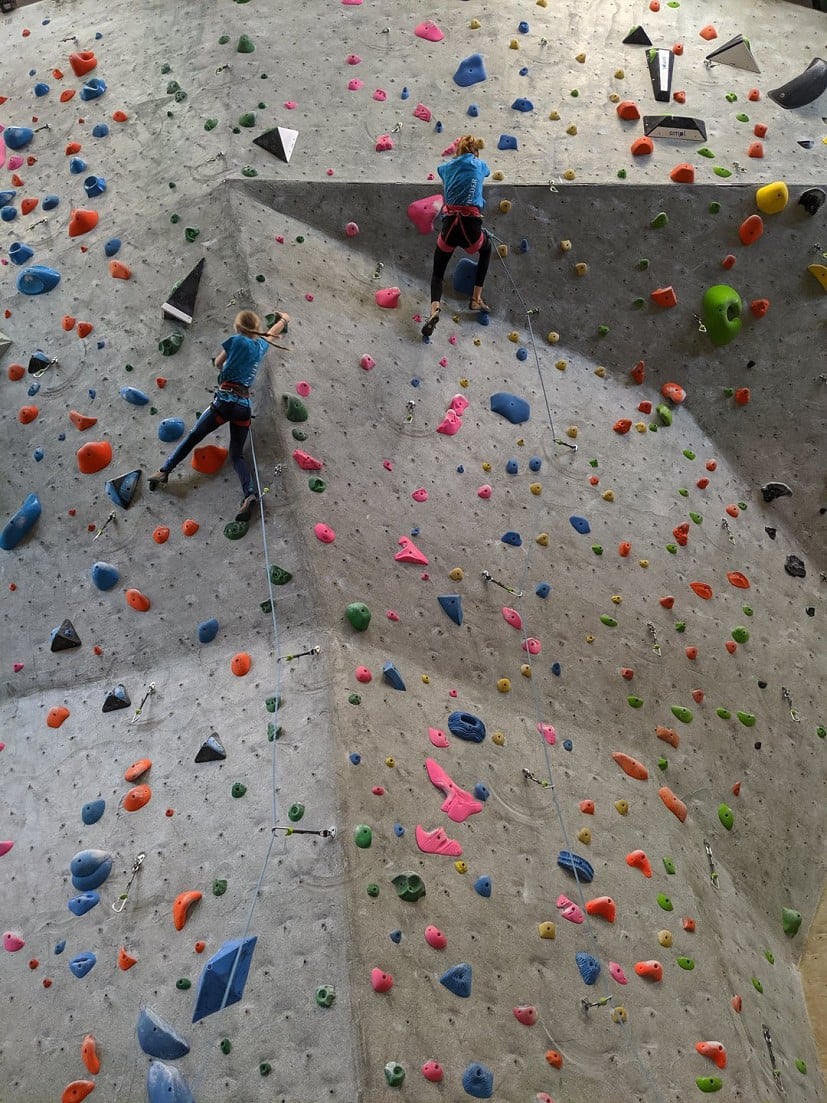
Fitness Games
Climbing should be fun for kids, including training and workouts. At certain points in life, climbing might be either fun or productive but not necessarily both. For a kid as young as George, fun is productive. I've found that young climbers are often really excited about working out, because exercising can easily be turned into a game. A few fun exercise ideas include: Imaginary superhero flights during prone cobra (superman) core workouts, forward squat-jump races with their teammates, bear crawls across the gym, and Simon Says with different exercises like pushups, sit-ups, and jumping jacks.
As a coach, I'm not worried about a seven year old redpointing their project. Instead, I care about promoting positive motivation at a young age, because that is what encourages kids to invest in climbing as a lifetime sport. But in case you were wondering, George did make it to the top of his project, although he hasn't linked all of the moves quite yet.
- ARTICLE: Gender Bias in Climbing Media - A Study 4 Feb, 2020

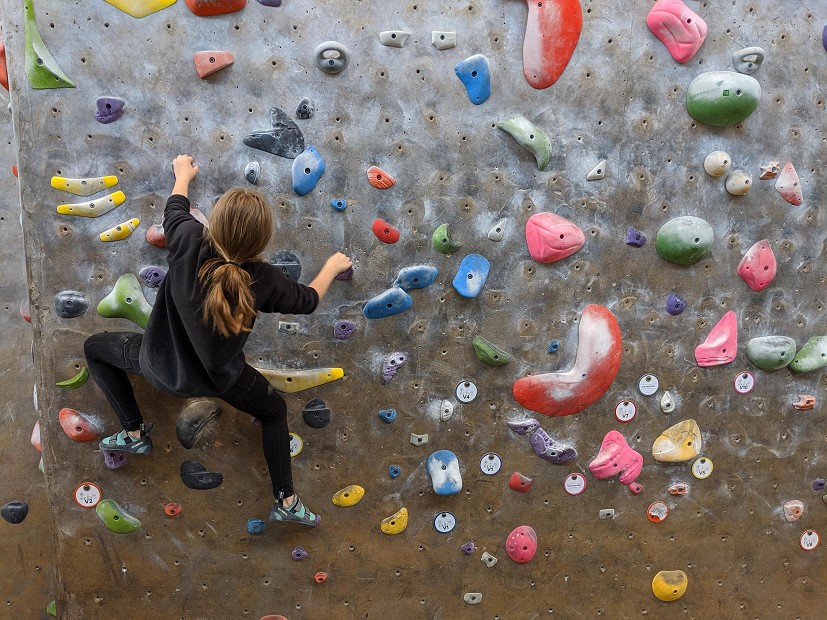
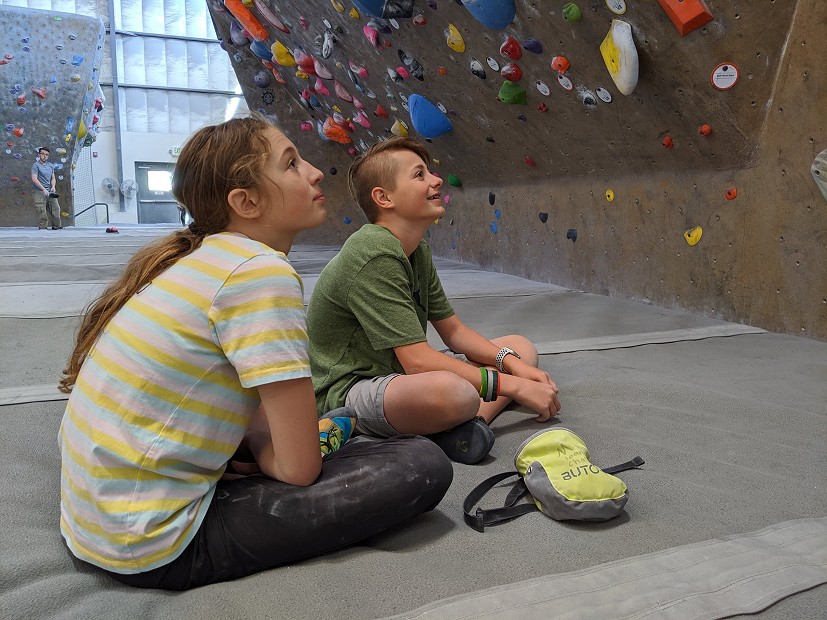



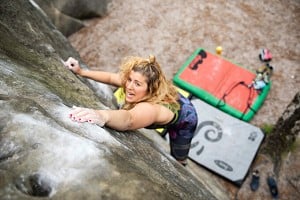









Comments
When I take my kids to the wall, we take a few lego men and I put them on holds about ten feet off the deck. They have to climb up and save them. This way they are climbing, and learning how to move, without realising it. Quite a good method for getting kids climbing for fun and not just for the sake of climbing, which may seem quite pointless to some.
Duct tape and a sharpie are my go to bits of kit for small ones.
Rip a bit and fold it to make a post-it like thing and draw an emoji or simple pic for them to collect. They can then stick them to their t-shirt and climb down. Sometimes I'd draw spiders and put them on holds to eliminate, etc. Endless fun 😁
Love this idea! I will use it next time I take them to the wall. Cheers.
One of my local walls will lend out soft toy monkeys on request - great for wee kids to rescue, and gets them focussig above, rather than on the adult belayer far far below.
Many little kids like descending, or swinging around suspended, more than climbing, and I think adults should be cool with that. Immersion is all good, and if tinies are happy, that's a big tick right there.
One of the first things we purchased at our climbing wall 6yrs ago was a cuddly toy dog with magnets in its paws so it could stick to any holds. I would bumble up to the top of the wall and give her challenges to retrieve it. 6yrs on that toy hangs in my campervan whilst we travel the U.K. and Europe competing. Brilliant suggestion.